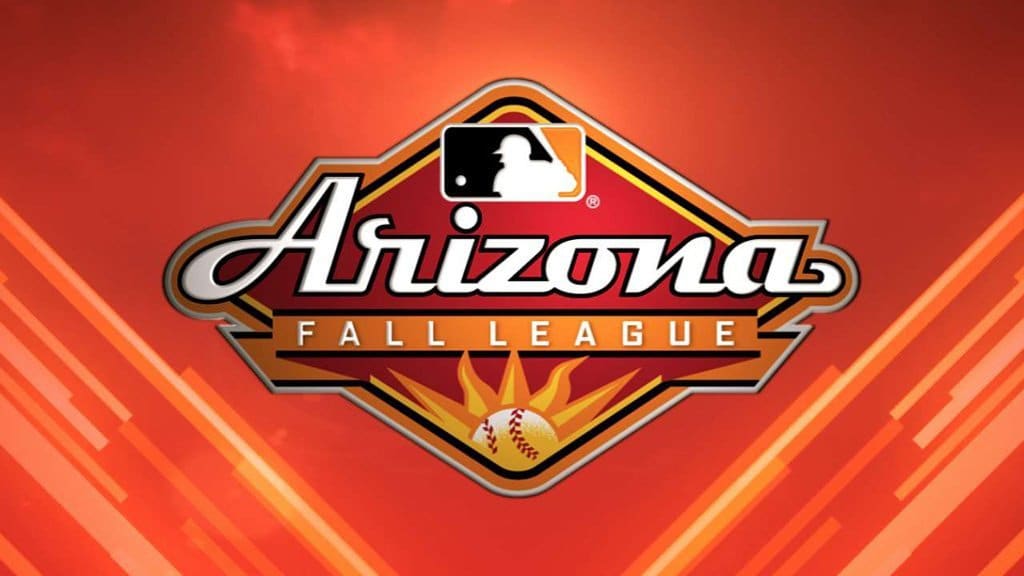
The Arizona Fall League will experiment with several rules in 2023, according to sources familiar with a Friday conference call that included MLB officials, team farm directors and AFL staff.
The experiments in the AFL, a circuit for premier prospects that will run from Oct. 2 through Nov. 11, include modest modifications to the pitch timer, a redefinition of the runner’s lane and a rule preventing defenders from blocking the runner’s path to the base. The changes are aimed at obtaining more data to determine what changes might be worth continued analysis in the Minor Leagues and potential discussion with MLB’s Joint Competition Committee.
These are the details of the rules:
Pitch timer
To collect more data, the AFL’s modified pitch timer will have 15 seconds between pitches with the bases empty and 18 seconds with runners on.
MLB has experimented with various combinations for the pitch timer, including 15/17 seconds in the Single-A California League in 2021, 14/18 in most Minor Leagues in 2022 and ‘23, and both 15/19 and 17/17 in Triple-A this season. The timer is 15/20 in the Major Leagues.
On average, in the big leagues this year, pitchers have had anywhere from 6.5 to 7.8 seconds remaining on the timer when they begin their motions, depending on the situation.
Another alteration to the timer rules in the AFL will be the timer resetting immediately when a batter uses his timeout. At the big-league level, the timer has typically restarted after a timeout only when a batter approaches the box. This tweak tightens up the time between the timeout and the next pitch.
Runner’s lane
MLB Rule 5.09(a)(11) states, “A batter is out when, in running the last half of the distance from home base to first base, while the ball is being fielded to first base, they run outside (to the right of) the three-foot line, or inside (to the left of) the foul line, and in the umpire’s judgment in so doing interfere with the fielder taking the throw at first base, in which case the ball is dead.”
In the AFL, the 45-foot runner’s lane, which begins halfway between home plate and first base, will be maintained. But instead of forcing the runner to be in foul territory (right of the foul line), the runner will now be deemed in compliance with the rule as long as both feet remain on the dirt path between home and first. This change will allow a right-handed hitter to run directly to first base.
In Game 6 of the 2019 World Series, the Nationals’ Trea Turner was correctly called out for interference for running to the left of the foul line on an important play. Under this AFL rule, Turner would have been safe had both feet remained on the dirt path, even if they were left of the foul line.
Blocking bases
With new rules at the MLB level creating more base-stealing attempts, there have been complaints from runners about fielders engaging in more “base-blocking” with their bodies. Though MLB has rules for runners and catchers on plays at the plate, base-blocking at the other bases is technically legal.
“It’s inevitable that someone is going to get hurt,” Pirates star Andrew McCutchen told The Athletic this season. “The only thing we can do is slide cleats-first and possibly injure [the fielder] or injure both of us.”
In the AFL, defenders will be required to provide the runner with a lane to the base. The runner will be called safe if the umpire judges that the runner’s progress was impeded by the defender. There will be no exceptions made for throws that take the fielder into the path of the runner, though exceptions will be made if the umpire deems that an impeded runner would have been out, anyway, or if the fielder impeded the runner while fielding a batted ball.
This rule is also responsive to the increased tendency of runners to use headfirst slides to avoid popping off the base and being ruled out on replay reviews. An unimpeded path to the base would allow them to use such slides more safely.
Other rules
• Pitchers will be required to work out of the stretch with runners on base, rather than declaring whether they’re working out of the windup or stretch. This is meant to avoid the confusion created when a pitcher forgets to declare that he is working out of the windup with a man aboard and is called for a balk when he does not deliver the pitch in an uninterrupted motion.
• The automated ball-strike challenge system will be used again in the AFL, as it was in 2022. The change is that the ABS strike zone for each player will be based on his specific stance (calculated from the median of his previous 50 plate appearances), rather than his height. MLB implemented this change to ABS late in the Triple-A season this year.
• There will be a rule addressing the recent trend of players running through second base on force plays. The baserunning tactic can allow a run to score from third if the runner can beat the throw by sprinting through the bag, negating the force and delaying the tag for the out. It can also technically create replay review issues in which the runner beats the throw by sprinting and is ruled safe despite having run through the bag. In the AFL, runners not intending to reach and stay on the base safely or advance to the next base will be called out.
